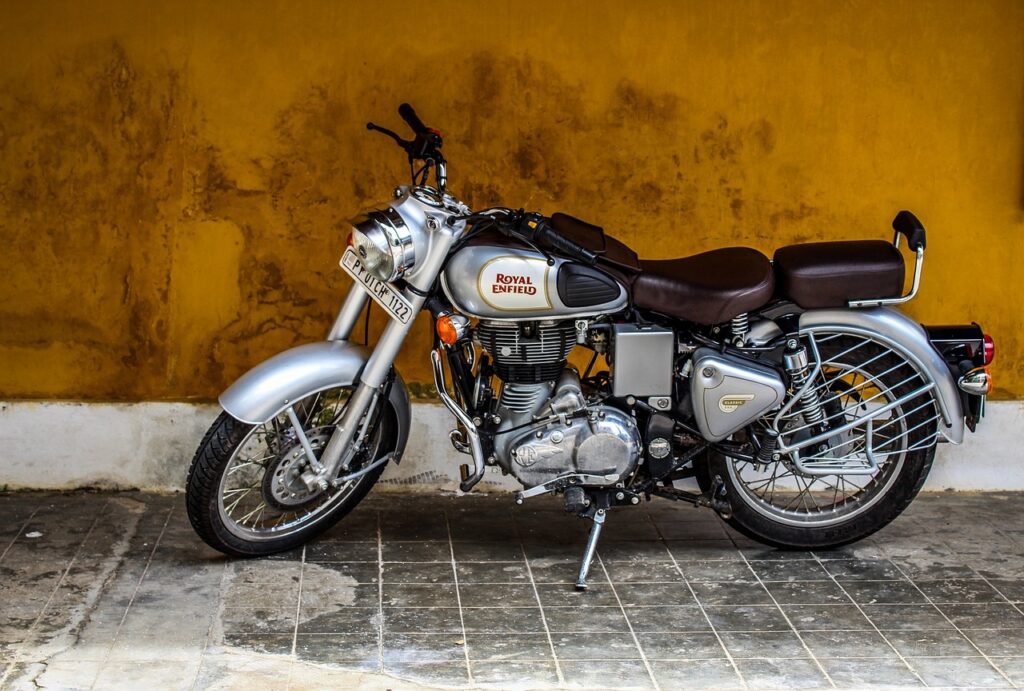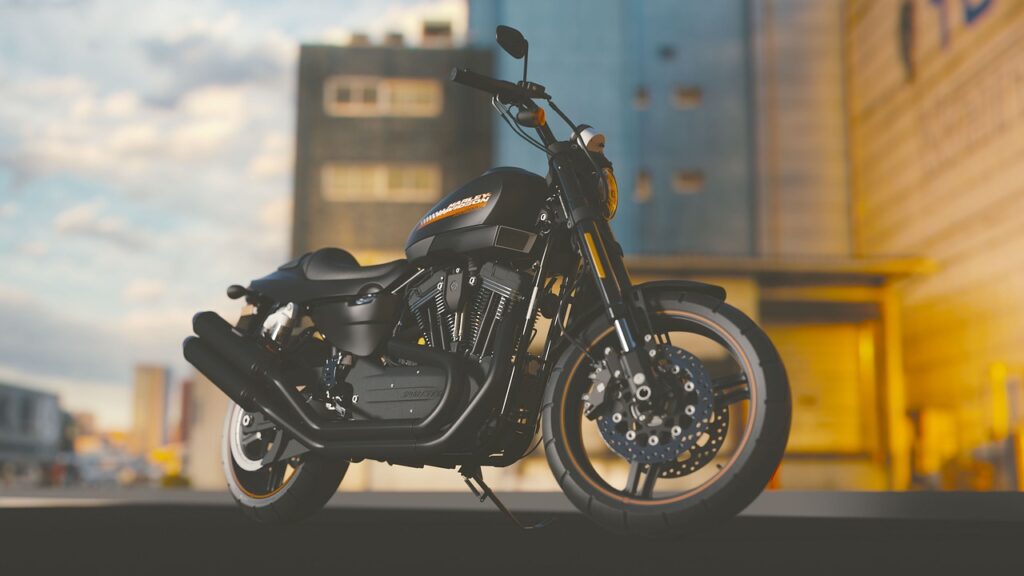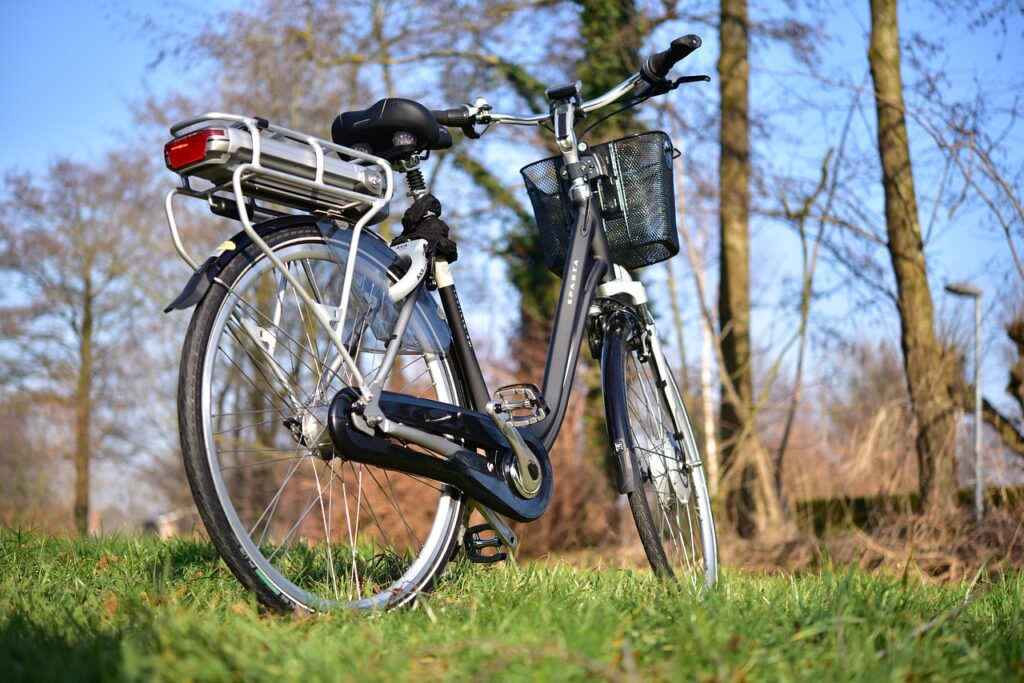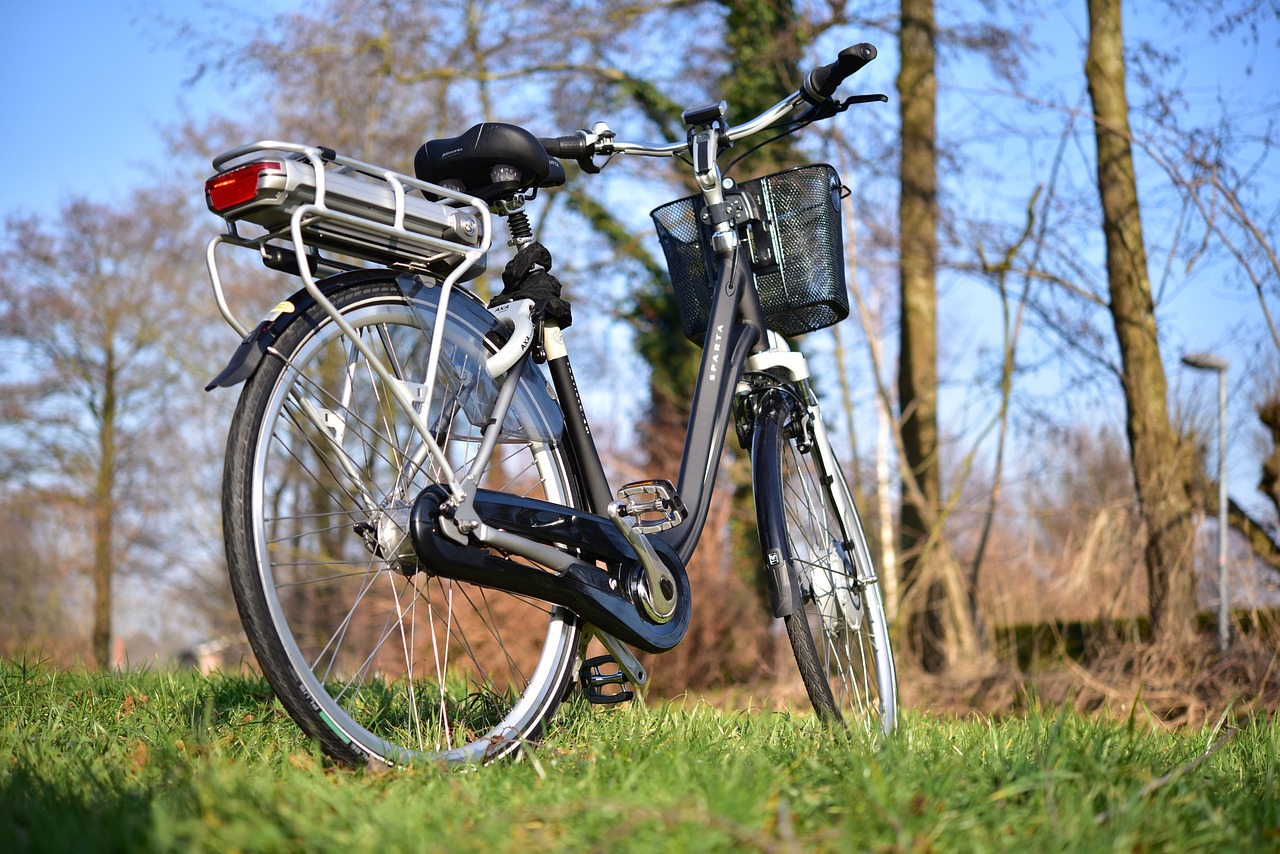In the thrilling world of outdoor adventures, E-bikes have emerged as a revolutionary tool for trail riding and camping. This article offers a step-by-step guide on how to build your own E-bike from scratch. So, whether you’re a biking enthusiast looking to take your hobby to the next level or a beginner eager to kick-start your journey into the electrifying realm of E-bikes, this tailor-made guide will surely equip you with the right skills and knowledge to construct your very own E-bike. No matter your level of expertise or purpose, this guide has you covered. You’ll soon be zipping around on your custom creation, basking in the great outdoors in a brand new way.

This image is property of pixabay.com.
Understanding the Basics of E-bikes
If you love cycling but want to ease the effort, e-bikes offer a perfect solution. But first, let’s understand the basics of an e-bike.
The Basics of An E-bike
An e-bike, also known as an electric bike, is essentially a bicycle with an integrated electric motor that can be used for propulsion. It uses rechargeable batteries and can travel up to 15 to 28 mph, depending on the country’s regulations. Unlike conventional bicycles, they provide a boost to your pedaling efforts, making it easier to cycle uphill or against the wind.
Why Choose an E-bike over traditional bicycles
E-bikes have many advantages over traditional bicycles. They ease your pedaling, making cycling less strenuous, especially for long distances. This feature also allows you to conquer hilly terrain and windy conditions with much less effort. They also have high-speed capability which makes them a perfect solution for commuting or running errands. With e-bikes, you still reap the physical benefits of cycling while having the freedom to increase or decrease the level of exercise you get.
Different Types of E-bikes
There are three main types of e-bikes. Pedal Assist or Pedelecs monitor the rider’s pedaling and automatically add a certain amount of motor assistance – ideal for long trips. Power on Demand e-bikes have a throttle and do not rely on pedaling. Lastly, Speed Pedelecs are like Pedelecs but they offer more power and speed.
Choosing the Right Components for Your E-bike
The performance of your e-bike greatly depends on its components. Therefore, let us go through some of these parts to know how they work.
Understanding the importance of a good frame
The frame is the backbone of your e-bike as it harbors all the components. Strong frames made from steel or aluminum are most preferred for e-bike builds because they are sturdy and can handle the weight and strain of an e-bike motor and battery.
Selecting the right motor
The motor is a crucial component of any e-bike. It provides power to the drivetrain to help you climb hills and maintain speeds with less effort. There are two types of motors: Hub motors, that are installed in the center of either the front or rear wheel, and Mid-drives motors that are mounted at the bottom bracket of the bike.
Importance of the battery
The battery stores power for the motor. Commonly, e-bikes use lithium-ion batteries that could last for 800-1000 charges. Make sure you select a battery that corresponds with the voltage and current requirements of your motor. Bigger batteries provide more range, but they also increase the overall weight.
Choosing the correct controller
The controller is like the “brain” of an e-bike. It takes inputs from the rider like torque applied on the pedals and throttle position and then decides how much current to send to the motor. This affects how the e-bike feels and performs, so make sure to choose a controller that matches the specifications of your motor and battery.
The role of a throttle
The throttle regulates power to the motor, controlling speed and acceleration. Some throttles are activated by twisting a grip or pressing a lever and offer a smooth, comfortable ride.
Other crucial components: wheel & tires, brakes
Lastly, don’t forget about wheels, tires, and brakes. Choosing the right wheel size and tire type will affect how your e-bike handles on various terrains. Good brakes are essential for an e-bike due to its added weight and speed.
Acquiring the Right Tools
Building an e-bike requires some basic tools. This section will guide you through the main tools needed and tips on acquiring them.
Required tools for building an e-bike
The basic tools required for an e-bike build include a set of wrenches, screwdrivers, pliers, cable cutters, and wire connectors. A multimeter will be helpful in electric installation and troubleshooting. You may also need other bike-specific tools depending on the design of your bike.
Tips for renting or buying tools
If you don’t have all the necessary tools, consider renting them from a local bike shop or buy a basic bike tool kit. It’s crucial to remember that the quality of tools affects the ease of installation and lifespan of your e-bike.
Organizing your workspace
Once you have your tools ready, organize your workspace. A clean, well-lit, and spacious working area will make your build progress smoothly and safely. Remember to keep your tools and components orderly.
Selecting and Assembling Your E-bike Frame
The e-bike frame is the “skeleton” that holds all other components together. Below are tips to help you choose the right frame and assemble it.
Choosing the right frame
When choosing a frame for your e-bike, consider the type of e-bike you want, the terrain you’ll frequently traverse, and your budget. Strong, light, and affordable frames are often made from aluminum. Steel frames are sturdy but heavy and can be more expensive.
How to assemble your frame
Assembling a bike frame might seem daunting, but it’s quite simple if you follow the manufacturer’s manual. However, if you’re not mechanically inclined, it’s wise to have a professional do it for you.
Key considerations when selecting a frame
When selecting a frame, consider its geometry, material, size, and capacity to hold the motor and battery. Other factors to consider include the type of usage (urban commuting or mountain biking) and compatibility with other components.

This image is property of pixabay.com.
Choosing, Installing and Connecting the Motor
The e-bike motor is a key component that strongly influences the bike’s performance. The following section will guide you on how to choose, install, and connect your motor.
How to choose the right motor
The motor type you select will depend on your biking needs – whether you’ll be climbing steep hills or cycling on flat roads. Mid-drive motors are better for steep terrain due to their better performance on slopes. Hub motors, on the other hand, are easier to install and are ideal for biking on flat terrain.
Steps to install the motor
Installing the motor involves securing it to your frame (at the center for mid-drives or in the hub of your chosen wheel for hub motors), and connecting it to your controller and battery. You’ll need tools like a wrench and screwdriver. Follow the motor manufacturer’s manual for detailed steps.
How to correctly connect your motor
Connecting the motor involves attaching the motor wires to the controller, ensuring they match in terms of voltage and wattage. It’s very important to ensure all connections are done correctly to avoid damage to the motor or other parts of your e-bike.
Battery Selection and Installation
The battery supplies power to your e-bike, influencing the bike’s speed, range, and weight. Here’s a guide on how to choose and install your e-bike battery.
Choosing a battery with adequate range and power
Choosing the right battery involves considering the power output (wattage), which affects the bike’s speed and range, and the voltage, which should match that of your motor. Common choices for e-bikes are lithium-ion batteries due to their energy density and longevity.
How to install the battery
Typically, the battery is installed on the frame’s downtube or behind the seat tube, depending on the bike’s design. Make sure it’s secure and doesn’t interfere with normal bike operation.
Ensuring safety when handling the battery
Handling e-bike batteries should be done with care as mishandling can lead to accidents. Always disconnect the battery before any maintenance or modification and avoid shorting the battery terminals.

This image is property of pixabay.com.
Controller Selection and Installation
The controller is the bike’s ‘brain’, controlling the motor’s operation and affecting the bike’s overall performance.
Understanding the role of a controller
The controller interprets signals from the throttle or pedal assist sensor and determines how much power to supply to the motor. It also features protection mechanisms to prevent components from overheating or overloading.
How to choose the best controller for your e-bike
Choosing the right controller involves considering its voltage and current ratings to match that of your motor and battery. Remember to also check for additional features like regenerative braking or cruise control.
Installing the controller
Installation of the controller involves mounting it on the frame and connecting it to the throttle, pedal assist system, and motor. Exact installation can vary from controller to controller, so ensure you follow the instructions from the manufacturer.
Connecting the controller with other components
Connecting the controller usually involves fitting wires from the controller to respective components. These include the motor, battery, throttle, and any other accessories you might have. All connections must be properly done to ensure smooth operation of your e-bike.
Adding Other Components
Apart from the primary components, let’s look into other components that finalize your e-bike build like wheels, tires, brakes, and throttle.
Choosing the right wheels & tires
Consider the type of terrain you’ll be biking on when choosing your wheels and tires. Wider tires offer more stability for off-road biking while thinner tires reduce rolling resistance for street cycling.
Selecting and installing appropriate brakes
Remember, e-bikes can go faster and weigh more than regular bikes. This means investing in strong brakes is crucial for your safety. Disc brakes or high-quality V-brakes work well for e-bikes.
Adding a throttle: tips and pointers
A throttle gives you the option to ride your e-bike without pedaling. It can be a twist-grip type, thumb lever, or a push-button type. Installation involves connecting the throttle to the controller.
Checking and Troubleshooting
After setting up your e-bike, it’s essential to check and troubleshoot to ensure everything is correctly done.
Ensuring all connections are properly done
Check all electrical and mechanical connections. Make sure nothing is loose or improperly connected. Use a multimeter to ensure power is flowing correctly.
Checking for common issues
Common issues include a non-working throttle or motor, or weak brakes. These might be indicative of incorrect installation or compatibility issues between components.
Troubleshooting common problems
For non-working electrical components, check connections and continuity with a multimeter. Brakes can be adjusted for better performance. Always refer to manuals or online forums for guidance.
Safety checks
Double-check brakes, tire pressure, and that all fixings are secure. Ensure the battery and motor aren’t overheating during use.
Understanding Legal and Safety Matters
When riding an e-bike, adherence to laws and focus on safety are paramount.
Legal aspects of riding an e-bike
Learn about the e-bike laws within your jurisdiction, such as the legal speed limit, age requirements, and if a helmet or special license is required.
Safety equipment and precautions while riding
Always wear a helmet. Use bright, reflective clothing and functional lights if riding at night. Maintain a safe speed, especially in populated areas.
Understanding traffic rules for e-bikes
As an e-bike rider, you’re expected to adhere to the same traffic rules as other road users. Always signal your turns, and obey traffic lights and signs.
Happy e-biking! Remember that building and maintaining an e-bike, like any other DIY project, can be challenging yet rewarding and offers a great opportunity for learning and fun.

